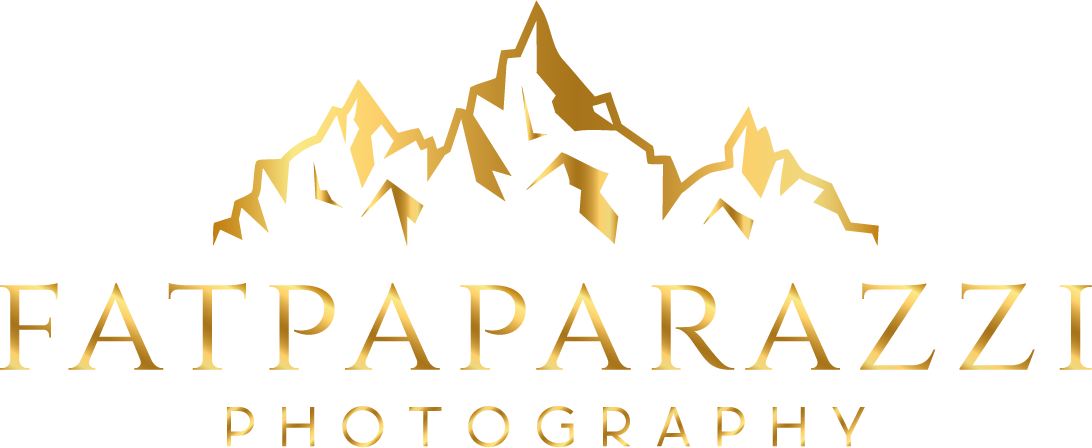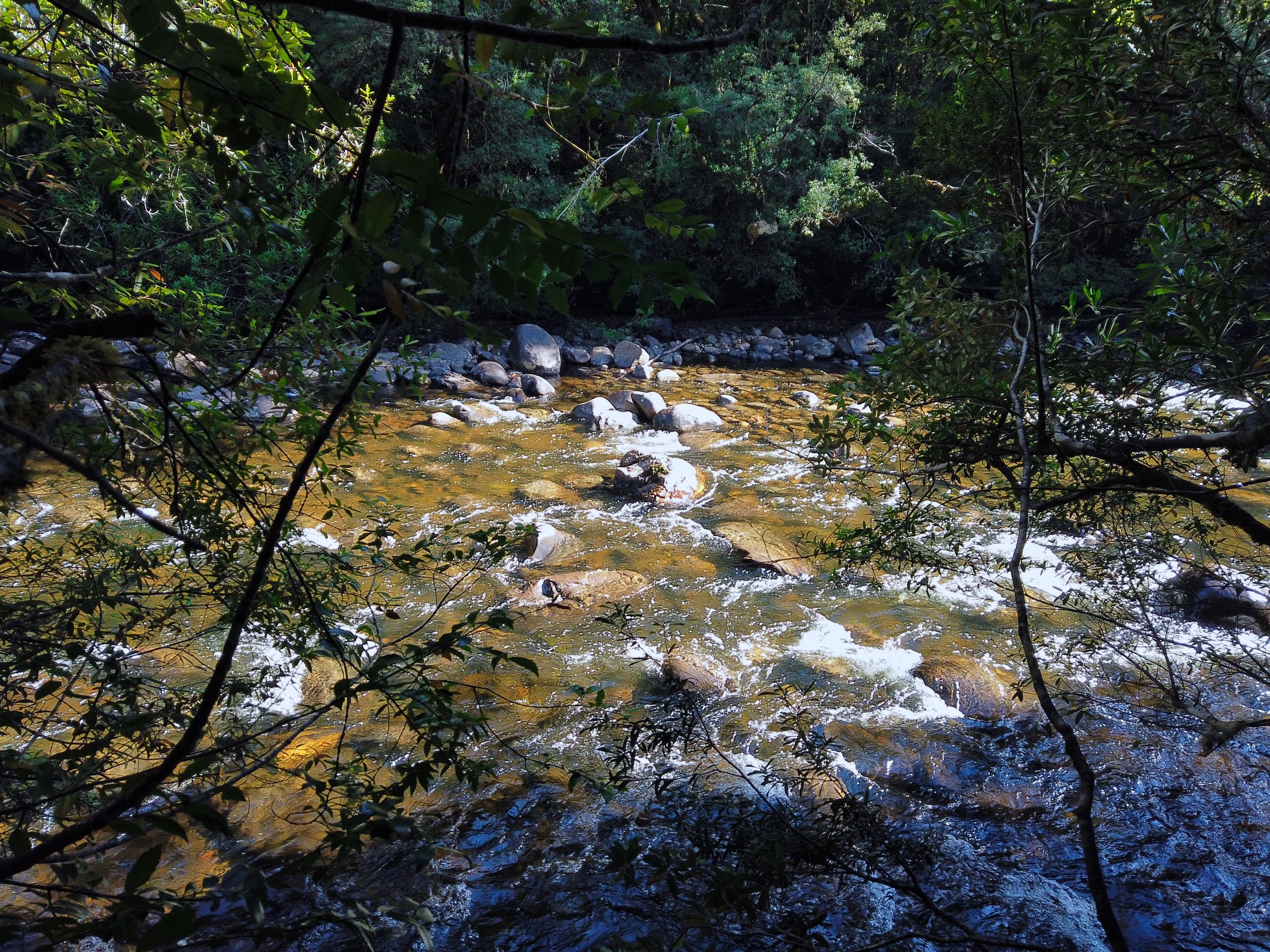3rd Light - Lake St Clair to Strahan
Another early start took us back to the lake’s edge for some morning photography. The sun and clouds didn’t play ball but it was stunningly beautiful regardless. A chilled breeze whipped off the vast lake in a southerly direction bringing with it a constant swell of waves breaking over the stoney shore creating a distinctive ring. Strangely from this position, and in the relative still of morning, one would never suspect Lake St Clair is in fact Australia’s deepest lake. We stayed until well after sun up lamenting only our need to leave. Another day here, and even a chance to do one of the many bush walks in the area would have been perfect.
Lake St Clair, Tasmania
On the road again we pushed on through the rugged central district making a stop at the Franklin River Nature Walk. Hidden only metres off the highway, this Elvin hollow of elevated board walks meanders along the narrow banks of the Franklin River providing a glimpse into the majesty of the wilderness and the need for its preservation. Anybody wanting to experience this ruggedness, but fearful of the strenuous hikes required, need only spend an hour on this short loop to get their first taste of the renowned beauty of south western Tasmania. The Franklin is born in this region and travels 129 kilometres, picking up 16 tributaries, before its confluence with the Gordon River on the west coast.
Lake Burbury was unknown until we spotted the sign posted turnoff, so after the reward of our last stop we decided to pull in and see why the sign was put there in the first place. In the shadows of the granite topped West Coast Mountain Range reminiscent of the Dolomites or Rocky Mountains, this wind swept lake delivered more than the signpost suggested. With uninterrupted 180 degree views, the combination of lake and mountains was a welcomed rest, and photographic stop.
Lake Burbury
Crawling our way upward from the lake, the steep and winding road cut through thick forest sprinkled with tree ferns affording Anthony a top speed of no more than 50km/h. At its peak though we found Iron Blow Lookout. A must see on the tourist trail, the aquamarine water filled pit is a byproduct of years of copper mining in the area. Cut through layers of glacially formed rock, and backdropped by the western side of the aforementioned West Coast Mountains, a cantilevered viewing deck gives those brave enough a birds-eye view of Tasmania’s biggest hole. We would like to attest to this claim but haven’t yet visited Launceston.
Descending this range for the final time, we entered a stretch of road instagrammed as “the 99 bends”. Spectacular as these are, equaled only by the descent of the French Alpe d’Huez, we questioned why this particular road gained such notoriety. For between Hobart and this point, we loosely estimate to have driven through 6,945 bends thus far. With a slight degree of sea sickness, we actually failed to notice any change in equilibrium.
Having spent last November driving vast distances through outback NSW, at the time we wondered why those roads had very few bends. We now know after only 3 days that Tasmania has hogged them all !
Queenstown Post Office
Shitter instructions
Tumut is Las Vegas compared to Queenstown on a Sunday. The brochures said “explore the streets on foot”, but there are only so many CLOSED signs one can read before realising a much larger one at the towns entrance would have done the trick. All joking aside, Queenstown is a uniquely quaint and beautiful town in the foothills of the equally stunning Mounts Lyell and Owen.
First explored in 1862 and settled in 1892 with the discovery of gold, silver and copper, the town has had a chequered past, most notably the desecration of its own environs. Owing to a combination of tree felling for use in the mining smelters, together with years of fumes emanating from said smelters, the heavy annual rainfall in the area and erosion of shallow horizon topsoil, has seen the region develop a stark, barren landscape. With the cessation of mining, low shrubbery regrowth near hillside creeks is an early stage of a long recovery process, however concern by local residents since the mid 1980’s have stymied any major revegetation projects fearful the disappearance of the “moonscape” environment might effect their tourism income.
The scars left on the environment, both past and present, are a stark reminder of man’s greed. Although stunningly haunting and beautiful in its own way, nature should always be allowed to run its own course.
We lunched in the town’s central park, and with only 40 more kilometres of constant bends ahead of us we arrived at the coastal hamlet of Strahan.
Founded in 1877 largely as a port to cater to the early inland mining fields and timber getters, the town developed to a point the government saw need to construct a railway line from nearby booming Zeehan, and 9 years later, through to Queenstown. Fishing on a commercial scale was established in 1956 with the arrival of industrial refrigerators. The town prospered through to the late 1960’s until the rail links to Zeehan, then to Queenstown were closed. Consequently, its importance as a port declined and the town became a major tourist centre. It was in 1983, and the early foundations of eco-tourism, that saw a World Heritage order implemented across the region. The whole area is now known as the Franklin Lower Gordon Wild Rivers National Park and attracts tourists from around the globe.
Tonight we’d secured a powered site at the Strahan Holiday Retreat right in the heart of town. Like most caravan parks this one was pleasant, had all the expected facilities, and a friendly group of neighbours. The amenities however were a cross between central blocks and what we often book, private ensuites. Small groups of dual, private quarters where scattered throughout the park, and ours was conveniently only one van space away. But interestingly of note the dunnies came with instructions. Something Fatpap ashamedly admitted to being thankful for, because evidently he’d been doing it wrong for most of his life!
Our internet searches back home drew our attention to Risby Cove restaurant on the shores of Strahan Harbour. We’d pre-booked a degustation dinner with matching Tasmanian wines and dressed up for a night on the town.
Anthony was tired after such a strenuous drive so we decided to book a cab. Covid rendered the one cabbie unavailable, so a shout out on the Strahan community Facebook page introduced us to AJ, a Masters student of culinary studies obviously desperate for a quick buck. He dropped us off, and picked us up when summoned again, and salvaged a wonderful night on the harbour.



























